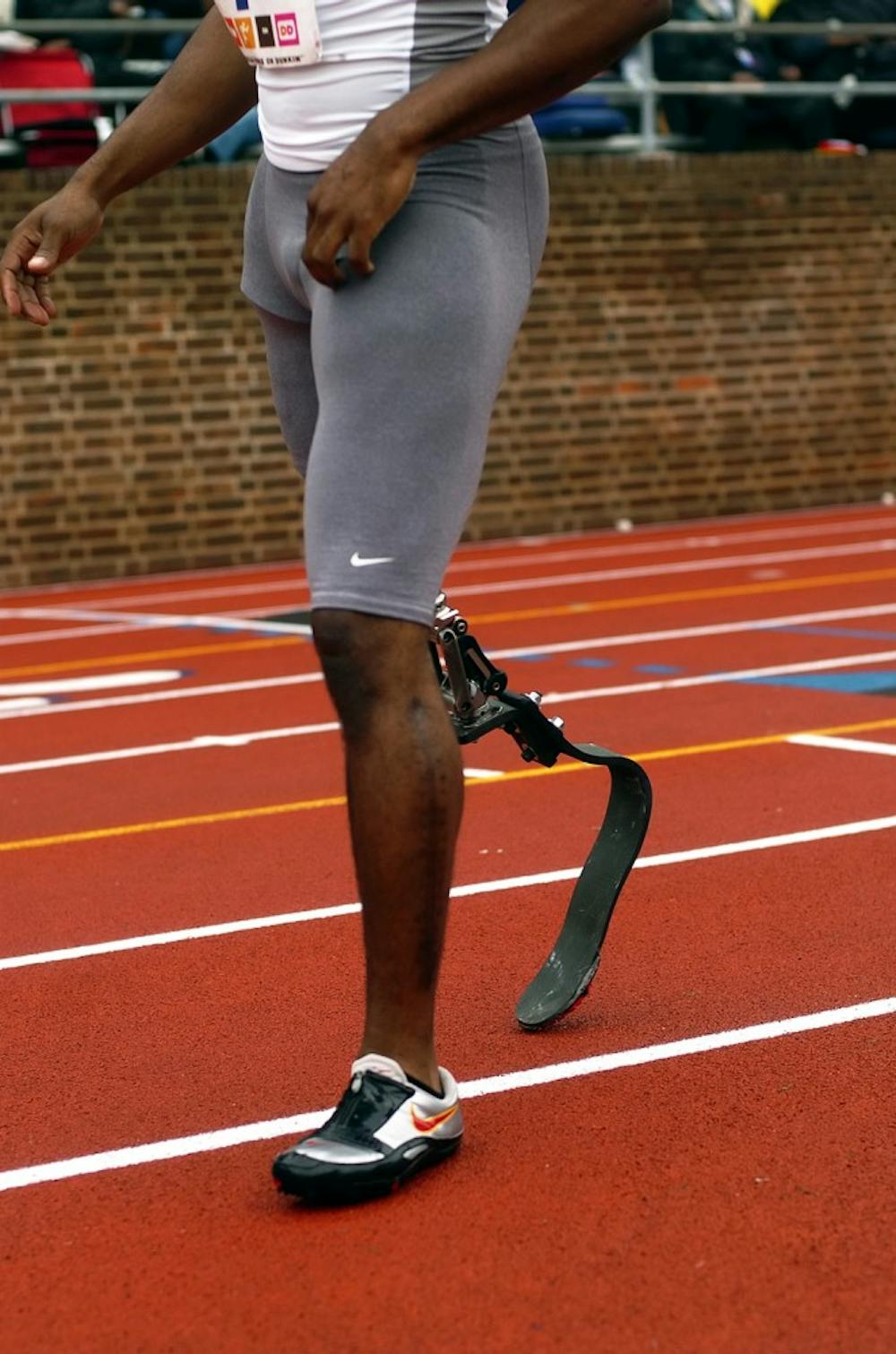For most runners, the start of an athletic competition begins with putting on a pair of shoes.
For Jerome Singleton, a two-time Paralympic medalist, it begins with putting on a prosthetic foot.
For 30 years, The Penn Relays have been a competition ground for elite athletes who have physical disabilities. Over the past eight years, that tradition has been maintained through a partnership with U.S. Paralympics, a division of the U.S. Olympic Committee.
This year, the organization will bring nearly 20 athletes to the Relays to compete in races for athletes who are visually impaired or have amputated limbs. Some will also compete alongside able-bodied counterparts.
At the 2010 Relays, there will be four races just for Paralympics athletes — two 100-meter dashes and two relays.
The visually impaired relay athletes will be competing against a team from Canada, while the amputee athletes will face each other.
The runners in the Paralympic events are highly talented athletes who have the ability to compete with runners with no physical disabilities. But they face a host of challenges most of the other runners at the Relays could never imagine.
The visually impaired athletes’ levels of sight range from total blindness to limited vision — enough to see a shadow of a hand in front of their face or read a BlackBerry with a magnifying glass, according to Cathy Sellers, associate director of the Paralympic Track and Field High Performance Program.
These blind and nearly blind athletes compete with a guide runner, athletes who have given up their own running careers to help these athletes compete.
Guide runners use the “elbow touch” method of guiding, in which they run just behind their athletes and talk them through the race. They are also responsible for setting up the starting blocks for their runners and negotiating baton handoffs during a relay, Sellers said.
Guides also need to have an intimate level of communication with their athletes to ensure success. Two-time silver medalist Elexis Gillette and his guide runner, Wesley Williams, train together at the Chula Vista Olympic Training Center in California. Beyond working together for several hours a day, they spend leisure time with each other too.
“It’s definitely a good relationship on the track and off the track,” Gillette said.
And the guide runners have to be incredible athletes as well. Many of them are former Olympic hopefuls themselves.
Amputee athletes face the huge cost burden of prosthetic limbs, often having different legs for walking, racing and jumping. As they train, they may need new legs as their quad muscles get bigger or as they slim down, Sellers said.
Singleton considers himself fortunate to have found Ossur , an orthopedic company, to sponsor him. Ossur provides him with a running foot, which can cost around $2,000 for a year’s worth of use.
The athletes became amputees through a variety of circumstances, ranging from birth defects to motorcycle and farming accidents to war injuries.
Singleton, for example, was born with a birth defect called fibular hemimelia, or the absence of the fibula bone in the leg. He became an amputee at one and a half, but was accustomed to playing sports as a child. He now attends the University of Michigan, where he trains with the track team.
Three of this year’s athletes — Jerrod Fields, Kortney Clemons and Rob Brown — are Iraq War veterans.
Beyond providing another dimension of competition for these runners, Sellers hopes the Paralympics’ presence at the Relays will spread the word about opportunities for athletes with physical disabilities.
“I feel like being there gives us a lot more exposure in a positive light,” Sellers said.
Dave Johnson, director of the Penn Relays, noted that the audience response to the Paralympic events has been tremendous.
“There’s something that in track circles is called the pity clap,” Johnson said. “That’s the applause the last finisher in a distance race gets. You don’t get that for the disabled athletes. There is a real appreciation of overcoming hardship.”
And for the athletes themselves, the outlet for competition has indeed played a role in overcoming hardship.
Gillette talked about finding a new lease on life when he began doing track and field as a sophomore in high school.
“Once I lost my vision, I was really down and so when I did finally get introduced to track and field, it gave me a sense of self-worth again,” he said.
“I felt like that was something that I could actually be good in — something that I could use to build myself up and make myself strong again.”



